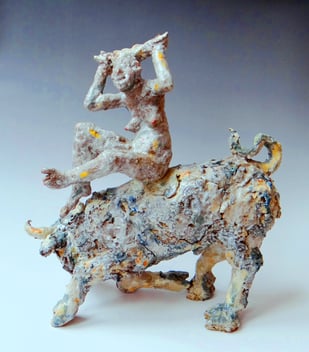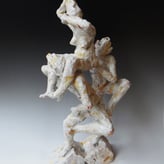Dante’s La Divina Commedia, di vita e di morte, the theatre of the absurd, is the context for his intuitive work. In the feast of visibility, he seeks that which is hidden. In the arranged genre pieces, several strong figures coalesce into a single being. The theatrical scenes have not been worked out in detail. By playing with the surface and shape, there is a strong suggestion of movement. The lumps of clay seem to have been moulded with the thumbs; the figures dance, stretch, and twirl together. Light footed yet at the same time strong.
Michael Flynn






